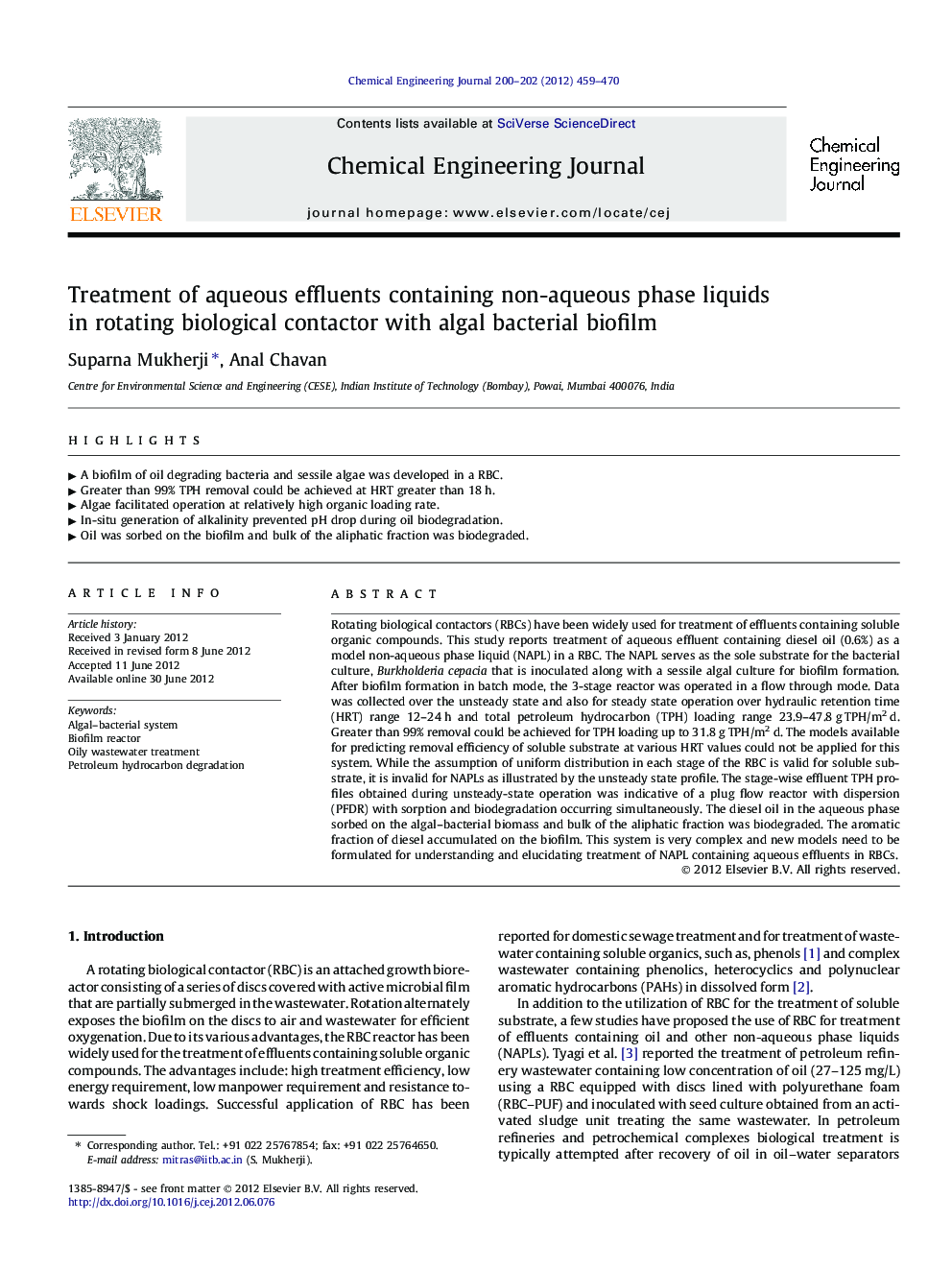| کد مقاله | کد نشریه | سال انتشار | مقاله انگلیسی | نسخه تمام متن |
|---|---|---|---|---|
| 149568 | 456434 | 2012 | 12 صفحه PDF | دانلود رایگان |

Rotating biological contactors (RBCs) have been widely used for treatment of effluents containing soluble organic compounds. This study reports treatment of aqueous effluent containing diesel oil (0.6%) as a model non-aqueous phase liquid (NAPL) in a RBC. The NAPL serves as the sole substrate for the bacterial culture, Burkholderia cepacia that is inoculated along with a sessile algal culture for biofilm formation. After biofilm formation in batch mode, the 3-stage reactor was operated in a flow through mode. Data was collected over the unsteady state and also for steady state operation over hydraulic retention time (HRT) range 12–24 h and total petroleum hydrocarbon (TPH) loading range 23.9–47.8 g TPH/m2 d. Greater than 99% removal could be achieved for TPH loading up to 31.8 g TPH/m2 d. The models available for predicting removal efficiency of soluble substrate at various HRT values could not be applied for this system. While the assumption of uniform distribution in each stage of the RBC is valid for soluble substrate, it is invalid for NAPLs as illustrated by the unsteady state profile. The stage-wise effluent TPH profiles obtained during unsteady-state operation was indicative of a plug flow reactor with dispersion (PFDR) with sorption and biodegradation occurring simultaneously. The diesel oil in the aqueous phase sorbed on the algal–bacterial biomass and bulk of the aliphatic fraction was biodegraded. The aromatic fraction of diesel accumulated on the biofilm. This system is very complex and new models need to be formulated for understanding and elucidating treatment of NAPL containing aqueous effluents in RBCs.
► A biofilm of oil degrading bacteria and sessile algae was developed in a RBC.
► Greater than 99% TPH removal could be achieved at HRT greater than 18 h.
► Algae facilitated operation at relatively high organic loading rate.
► In-situ generation of alkalinity prevented pH drop during oil biodegradation.
► Oil was sorbed on the biofilm and bulk of the aliphatic fraction was biodegraded.
Journal: Chemical Engineering Journal - Volumes 200–202, 15 August 2012, Pages 459–470